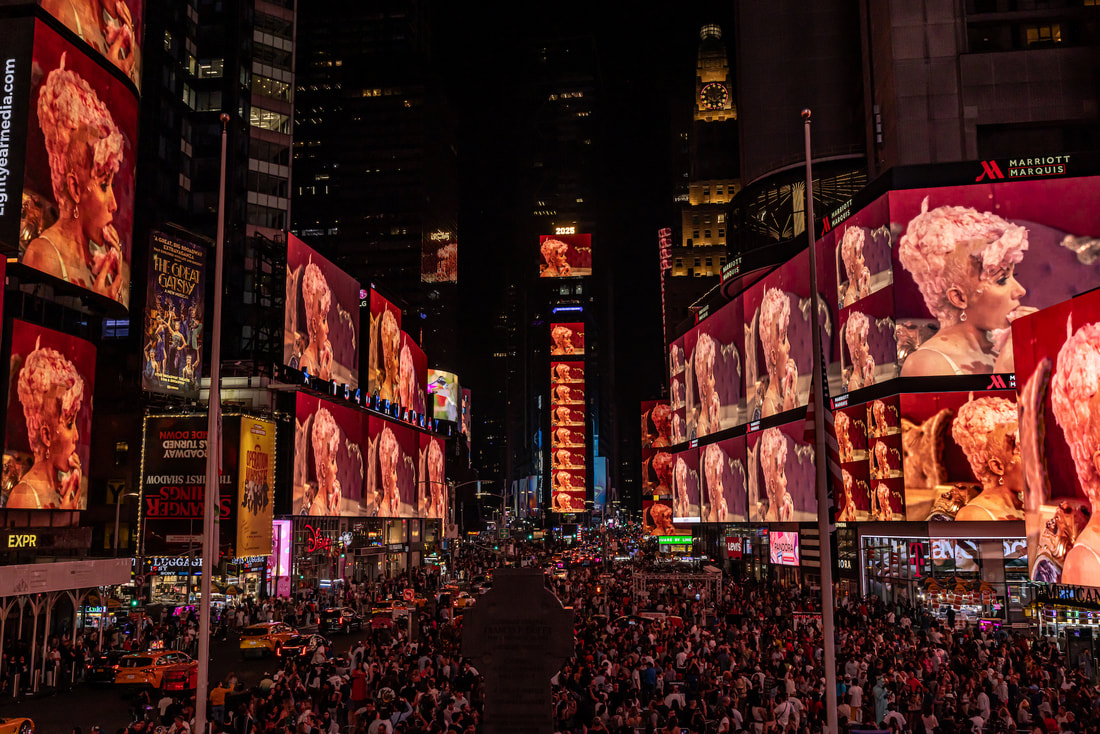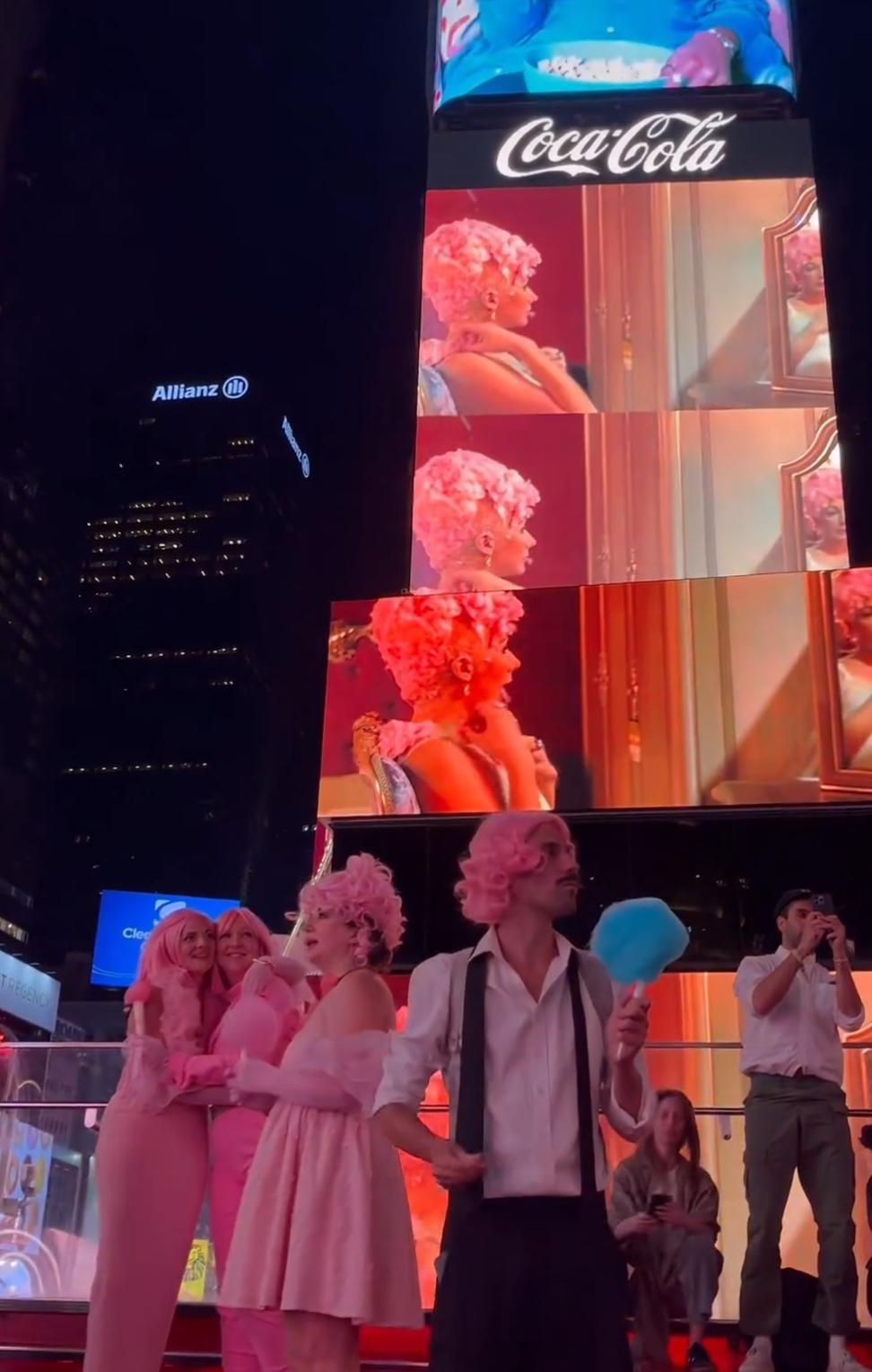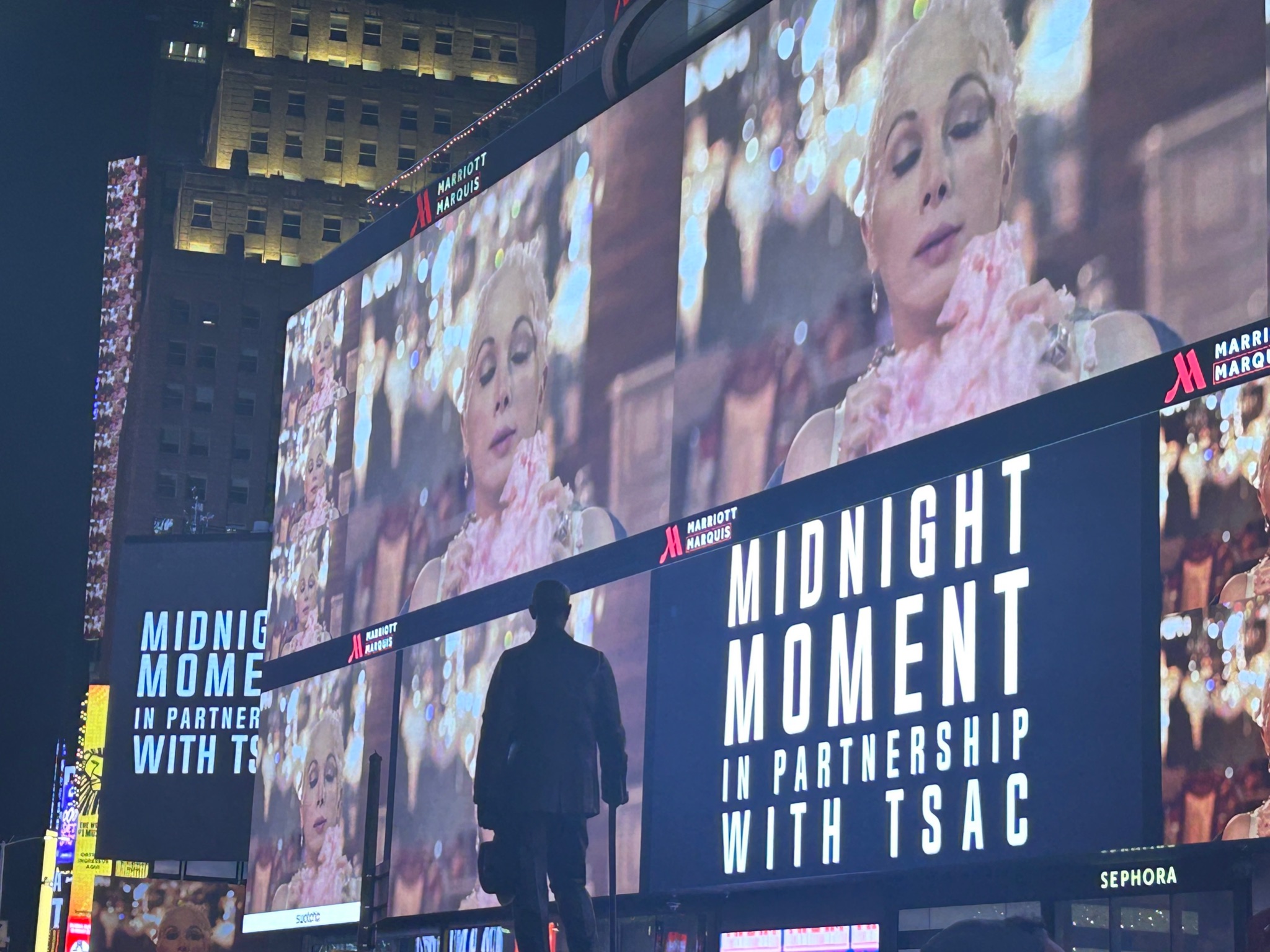Times Square at Midnight is Serving Haunting Consumerism and Rose-Colored Trichotillomania


While walking from 86th Street and Lexington what started out as a relaxing summer evening stroll on quiet streets became, as I came closer to my destination, Times Square, more alive, louder, and crowded. The energy quickly shifted as I got to this ever chaotic place; in the 80s and 90s it was New York’s red light district, home to pornographic theaters and a mainstay for sex workers, today it is a hotbed of another kind of commercialism part of a pilgrimage for those coming to experience that New York City state-of-mind with chain stores and restaurants lining the streets. But, still a stage for the madness of indulgence.
The setting felt surreal, it was Saturday night, and I had made the trek to see Bianca Abdi-Boragi’s experimental video work Cotton Candy on view through August 31st as part of the Times Square Arts Midnight Moment digital art program.
Cotton Candy is a short film beginning with beautiful scenes that transfixed me for its 3-min run-time, despite the bustle of my surroundings. Gold, beige, red walls, chandeliers, mirrors, and elegant furniture with decadent upholstery in velvet and silk slowly move across the frame. Filmed in an empty furniture store in Queens, there is no human in sight until a woman (Jonela Ruka) sitting in front of a mirror comes into view. She has a sugary pink cotton candy hairdo piled high on her head. I watch her pick at her hair and watch herself consume it bit by bit. It’s an action almost out of her control; she can’t help but devour the sugary confection. The beautiful hair she has begins to shrink, being torn away by her unrelenting need to pick it apart. She continues to look at herself, transfixed, the look of someone disembodied from her experience. It reminds me of myself with my Trichotillomania. I can’t help but pull strands of hair from my head, knowing it harms me, but in that moment, I’m satisfied, and the reality of my actions does not matter. She knows what she is doing is destroying a part of herself that can not be recovered, as parts of her bald head become more pronounced. She just can’t help herself. She tastes so good, and the reality of the consequences of her actions will be a problem to be dealt with later.

I had missed the celebration the night before on Friday, August 8th, because I was at the opening of RAW POWER, a group show I am currently in with Abdi-Boragi, on view through August 30th at Bitter Gallery. There she is exhibiting Lip Service, a bronze sculpture of a sardine can and a mouth full of rose stems. Think: fake support, inaction, old ideas. I won’t lie, I was a little exhausted after those celebrations, but I also wanted to experience the video artwork like most New Yorkers and out-of-towners who happen to find themselves at Times Square between 11:57 and midnight, more truthfully, without the crutch of my friends in the art world by my side.
I arrived 20 minutes before the video started playing to observe the scene and the people around me. Tourists taking videos and selfies, bright billboard screens flashing products and upcoming movies and TV shows, events that had already occurred months previously, fast fashion, and so many logos. On the streets, I watched women partially clothed in red, white, and blue take payment for selfies with eager men and women, scalpers yelling ticket availability for various off and on-Broadway shows, and food vendors selling their greasy and hot food. Surrounded by storefronts—Disney, Polo, Red Lobster—I found myself at the pinnacle of capitalism and consumerism, peak American culture with all its dirty and shiny parts proudly displayed.
It was the perfect setting for Abdi-Boragi’s work.
Cotton Candy is a reflection and haunting reminder of consumerism, greed, and the disregard one can have when pursuing pleasure with no thought of future consequences. It is a mirror to the society that we live in. In this piece, she asks us to question: “What do we consume, and what consumes us?” And perhaps, what lengths we will go to achieve our desires. The pink baroque theme lead to the thoughts of the French Revolution, when Marie Antoinette tried to eat her cake and have it too, but was guillotined. Fact or fiction, probably the latter; however, it is certain that the people who wanted to assuage social inequalities did so by dismantling the monarchy to find a new path forward. There was and still is resistance.

Importantly, it made me question, after we consume all to satisfy our at times irrational desires, what will be left? Where will we go from here, once all that is left are just pink sticky traces of past abundance and glamour? Those thoughts bounced around in my head as the screens returned to their regular repetition of commercials convincing everyone that what they have is not enough, that just one more experience, product, whatever, will make them feel more complete.
This dazzlingly sweet display left a sour taste in my mouth, and I highly recommend it. Recognizing that I hadn’t spent a dollar—wanting only to participate in the public art, but getting the spectacle of Times Square along with it—to quiet the noise, I put my headphones on to begin my walk to Grand Central for my train back home.
Bianca Abdi-Boragi Cotton Candy is on view nightly 11:57 pm–12 am on billboards on Broadway between 41st and 49th Streets, New York, NY, as part of Times Square Arts Midnight Moment program, through August 31, 2025.
RAW POWER is on view through August 30th at Bitter Gallery, 45 Division Street, New York, New York.
You Might Also Like
‘Beauty Can Be Immaterial:’ Bianca Abdi-Boragi on Her Sculptures That Investigate Time
Despite Tense Relations, A Pro-Ukrainian Video Art Platform Stages its 29th Program
What's Your Reaction?
Alexandria Deters is a queer femme embroidery artist, researcher, activist, archivist, and writer based in the Bronx, NY. She received a BA in Art History and in Women and Gender Studies at San Francisco State University in 2015 and her MA in American Fine and Decorative Art at Sotheby’s Institute of Art, NY in 2016. Her writing and artwork are influenced by her belief that every human being is a ‘living archive’, a unique individual that has experiences and stories worth documenting and remembering. Photo: Ross Collab. l Instagram l Website l

